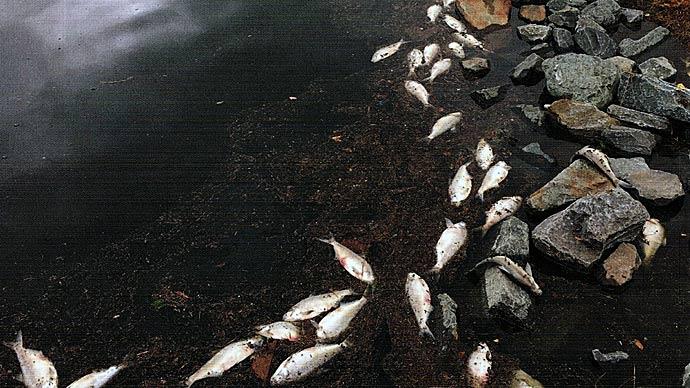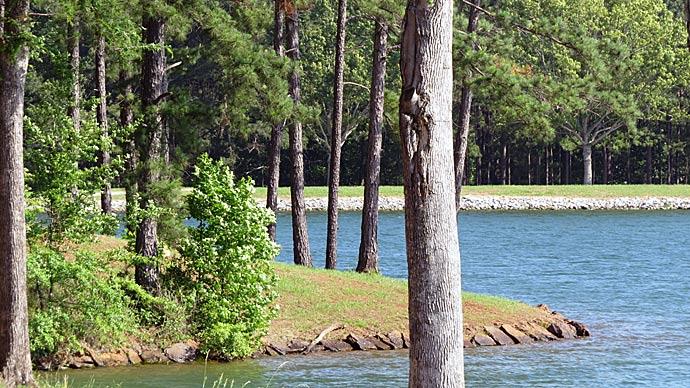
It's a dilemma you are likely to face some day ... if you own a pond. Should we eradicate our fishery and begin anew? Here's some hints how to make that decision less gut wrenching.
This is a classic example. I'll always remember the call I got in 1985. A prominent businessman from Dallas called. He just bought a beautiful property with a 200-acre oxbow lake along the Red River, not far from Paris, Texas. He wanted the lake for his dad to be able to enjoy his twilight years... fishing for good crappie and largemouth bass.
Trouble was, when dad went fishing, all he caught were skinny crappie, big buffalo and carp. The lake was muddy, shore to shore. Couldn't see six inches into that mudhole. He wanted to figure out what to do to "fix" the lake. He called, I answered the call. Still wet behind the ears, with just a few years experience, I did the best I knew how to do.
I electrofished the lake. Hundreds... no, thousands of trash fish. One bass. We electrofished one bass in five hours of electrofishing. That's pathetic.
The water was an average of four feet deep with lots of two foot water. The lake was about two feet low, though.
What to do? I called everyone I knew that knew more about it than me. That was pretty much everyone I knew. To the man, every one of them said, "Rotenone."
So, I plotted the strategy. A farmer irrigated from the lake, so there was a big diesel pump on site. Irrigation season was nearing its end and the new landowner convinced the farmer to pump night and day and drop the lake another two feet. That cut the volume more than half.
It still cost $ 10,000 just to buy the rotenone, the best fish toxicant of the time.
I called in all the troops. We had biologists from all over Texas convene on this lake. We had an airboat, 10 jon boats and each one had at least one pump to put out the liquid chemical.
Within two hours of beginning, we started seeing fish coming to the surface, wishing to escape their fate. After six hours, the northern shoreline was lined with white bodies and we weren't near finished.
To shorten the story, several of us estimated there to be 25-30,000 pounds of dead trash fish that day. We counted 32 different species and only saw 40-50 bass, total. That mudhole of an oxbow gave up its past, to make ready for the future. Amazingly, yet predictably, the muddy water went from red dirt color to crystal clear ... in one day. The fish obviously created a stir.
We stayed away for two weeks. Had to ... give the buzzards and coyotes time for their feast. Fast forward a few weeks. Everyone was happy. It had rained, the lake rose three feet a was still gin clear. We restocked it - 1,000 bluegill and 5 pounds of fathead minnows per acre, with some redear sunfish. They thrived and multiplied. By spring, the lake was teaming with baitfish.
We stocked advanced fingerlings the following spring and by the next fall, Dad was catching bass pushing two pounds. By the end of the second year, several bass pushing four pounds were caught. The third year, the lake had bragging rights.
This lake had a destiny.
In the third year, the area had major spring rains. The Red River left its banks, swallowed this great lake and sat on it for almost a month, mocking everything we had done.
Everything was ruined. The landowner was heartsick and gave up. Sold the place. To this day, that lake is about like it was 30 years ago.
We did everything "right"... except thinking enough about how the lake got out of whack in the first place. We should have thought about it.
Trash fish come from somewhere, sometime... if they are in your pond or lake today.
If you don't cut off the source, like motivational speaker Zig Ziglar says, "If you keep doing what you been doing, you'll keep getting what you been getting." So right in life, so right in ponds.
Another lake, another time ... electrofishing it and found nothing but mostly grown green sunfish. Thousands and thousands of them. The landowner wanted to eradicate. But. I convinced him otherwise. Why not take these green sunfish, deemed "trash fish" by bass bluegill enthusiasts, and turn them into bass food? By that span, the early 90's, I had learned enough about green sunfish to understand there was no way they could keep the pace with bass. So, we stocked 12-14" young, vibrant largemouth into this fertile three acre pond. We also added 450 adult bluegills. We expected the bass to eradicate the greenies over three years and give the bluegill a chance, with their multiple spawns and heavy reproduction patterns. The second year, electrofishing showed bass had grown to 15-18" and green sunfish numbers had plummeted. We saw quite a few baby bluegill, but none in the intermediate size classes, yet. The third year told the tale. Very few greens, lots of sizes of bluegill and bass growing like gorillas on steroids.
Corrective stocking worked very well in this case.
Those are your choices. Stock and manage to correct the problem or eradicate and start over. If you sample your fishery and find stunted bass with no food, consider corrective stocking and a culling program.
If your findings indicate a fishery dominated by sizes or species of fish you don't want, consider eradicating.
The best advice is to think years beyond the action you take. That fishery is the way it is because of some valid reason. If it is poor because of mismanagement or no management, corrective stocking is a viable answer to solve the problem.
But, if the lake or pond is simply doing what it does because of its environment, think deeply about your actions. If you don't figure out the "problem" and solve it, you can eradicate and start over and over and over and lake will revert ... every time.
I'll always remember a lake in deep south Texas, near Laredo. It was full of carp. No one knew where they came from but each decision-maker, to the man, wanted to eradicate and start over. Just before we did the deed, a tropical storm made its way over the property and parked for three days. 12 inches of rain later, the guys were in awe of the power of that lake. Water rolled over the spillway, headed toward the Rio Grande, less than a mile away. They told the tale, "If we saw one huge carp, we saw hundreds, swimming upstream from the river, over the boiling spillway, straight into our lake.
About a year after the event, the guys brought in a bulldozer, widened the spillway and moved downstream about 200 yards, where they cut the spillway where the water would fall about three feet straight down. Then, they built an expanded metal fence across the cut. There was no way a carp could swim past the fence or up the waterfall.
Problem solved.
Then, we rotenoned the lake the following summer and restocked. Good decision. To this day, that lake is well known for its bass.
The moral to this story? Think deeply about your decision to eradicate or correct by restocking or management. You can find out the "problem" if you dig deep enough.
Reprinted with permission from Pond Boss Magazine



